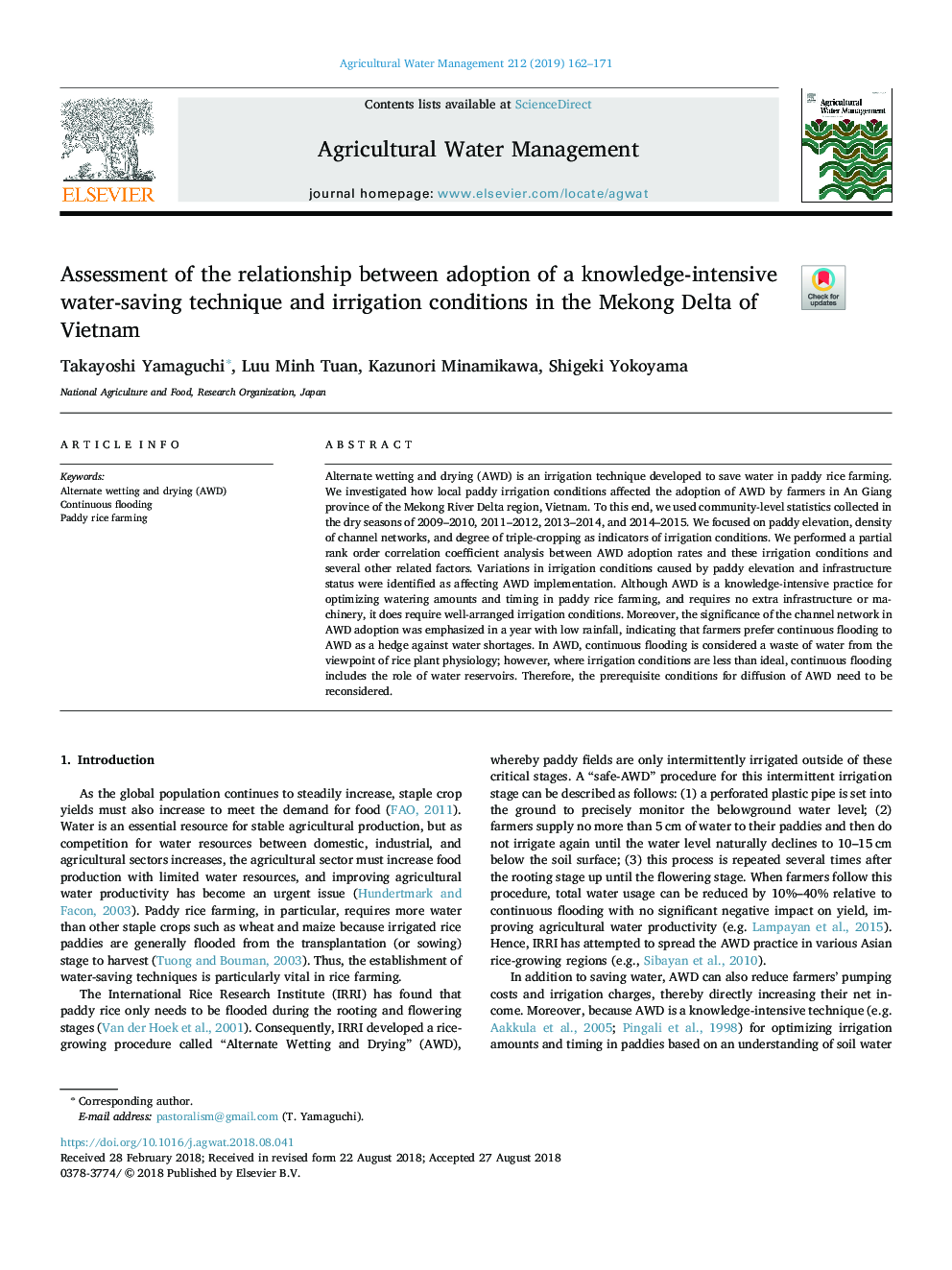| Article ID | Journal | Published Year | Pages | File Type |
|---|---|---|---|---|
| 10144777 | Agricultural Water Management | 2019 | 10 Pages |
Abstract
Alternate wetting and drying (AWD) is an irrigation technique developed to save water in paddy rice farming. We investigated how local paddy irrigation conditions affected the adoption of AWD by farmers in An Giang province of the Mekong River Delta region, Vietnam. To this end, we used community-level statistics collected in the dry seasons of 2009-2010, 2011-2012, 2013-2014, and 2014-2015. We focused on paddy elevation, density of channel networks, and degree of triple-cropping as indicators of irrigation conditions. We performed a partial rank order correlation coefficient analysis between AWD adoption rates and these irrigation conditions and several other related factors. Variations in irrigation conditions caused by paddy elevation and infrastructure status were identified as affecting AWD implementation. Although AWD is a knowledge-intensive practice for optimizing watering amounts and timing in paddy rice farming, and requires no extra infrastructure or machinery, it does require well-arranged irrigation conditions. Moreover, the significance of the channel network in AWD adoption was emphasized in a year with low rainfall, indicating that farmers prefer continuous flooding to AWD as a hedge against water shortages. In AWD, continuous flooding is considered a waste of water from the viewpoint of rice plant physiology; however, where irrigation conditions are less than ideal, continuous flooding includes the role of water reservoirs. Therefore, the prerequisite conditions for diffusion of AWD need to be reconsidered.
Related Topics
Life Sciences
Agricultural and Biological Sciences
Agronomy and Crop Science
Authors
Takayoshi Yamaguchi, Luu Minh Tuan, Kazunori Minamikawa, Shigeki Yokoyama,
